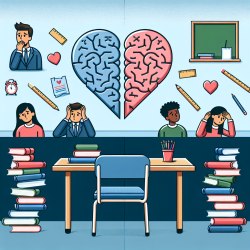Understanding the School Psychologist Shortage
In recent years, the demand for school psychologists has grown significantly. These professionals play a crucial role in addressing the diverse needs of students, including mental health, behavioral challenges, and educational support. However, a persistent shortage of school psychologists is making it increasingly difficult for schools to meet these needs effectively.
Why Are School Psychologists Important?
School psychologists are uniquely positioned to address a range of issues that students face. From mental and behavioral health concerns to academic challenges and cultural diversity, these professionals provide essential support that helps create a conducive learning environment. Their expertise is critical in addressing the complex challenges that arise in schools, such as poverty, bullying, and homelessness.
The Shortage Crisis
The National Association of School Psychologists (NASP) recommends a ratio of no more than 1,000 students per school psychologist. Unfortunately, most school districts fall short of this standard. In the 2014-2015 school year, the ratio was approximately 1,381 students per psychologist, far exceeding the recommended numbers.
- Only seven states met the recommended ratio in the 2009-2010 school year.
- In 2012-2013, the ratio was 1,442 students per psychologist.
This shortage is projected to continue through 2025, exacerbating the challenges schools face in supporting their students.
Factors Contributing to the Shortage
Several factors contribute to the shortage of school psychologists:
- Cultural and Linguistic Diversity: The workforce does not reflect the diversity of the student population. About 87% of school psychologists are White, with only 6% being Hispanic.
- Regional Disparities: Shortages are more pronounced in certain regions, such as the northwest and Rocky Mountain areas.
- Educational Pipeline: The availability of graduate programs in school psychology has not kept pace with demand, with only a 9% increase over nearly 40 years.
- Attrition and Retirement: A significant number of school psychologists are nearing retirement, and many report a desire to leave the profession due to administrative pressures.
Addressing the Shortage
To tackle this issue, NASP has developed a resource guide with recommendations:
- Improve recruitment by offering incentives and developing new graduate programs.
- Make respecialization more accessible with flexible options for returning professionals.
- Enhance retention through professional supervision, mentorship, and positive working environments.
Conclusion
The shortage of school psychologists is a significant challenge that requires immediate attention. By implementing strategic measures to improve recruitment, education, and retention, we can better support the growing needs of students and schools. For more information, please follow this link.










